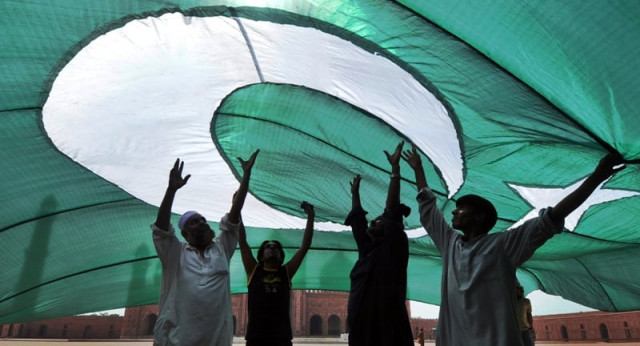
Measuring and evaluating the effects of a policy is a complex and challenging task. Public policies have to be designed to accomplish certain goals in pursuit of national ideology and long-term benefits for the nation. This task becomes complicated when the governments are faced with uncertain economic climate and there is no reliable data to underpin policies that can ascertain regional growth.
However, there are various methods to assess the desirability of government policies when it is vital to take a long-term view of future effects and of possible side effects.
The most important factor is to evaluate the risks of unexpected consequences from the application of traditional theories of regional planning, economic development, political and financial structuring. The ongoing debate on the division of provinces is a similar issue that should be supported with analysis of economic benefits and social costs to the country.
The importance of economic agglomeration cannot be denied, however, it is an established fact that the administrative units in Pakistan (the four provinces except FATA) are too large to be managed efficiently, and there exists an operational disconnect between the rulers and the ruled ie the impact of government actions to counter poverty hardly trickles down to the grass root-level.
This debate, in essence, constitutes ideas around the theory and application of “fiscal federalism” and the creation of provinces should in no way be based on ethnic grounds. Fiscal federalism is a subfield of public economics, and it is concerned with “understanding which functions and instruments are best centralised and which are best placed in the sphere of decentralised levels of government” (Oates, 1999).
An important factor that needs to be taken into consideration is to find out how assets are distributed across the regions and how they contribute to national growth? This will give the macro picture of the structure of economy, for example the results may reveal that only 10% regions are responsible for almost half of the GDP growth and job creation.
In this case, division of provinces purely based on ethnicity and language instead of economic infrastructure will promote inefficiencies and non-functionality, widening the gap further instead of reducing it.
In the second step, the sectors constituting the economy need to be analysed and categorised in order of contribution to the GDP. According to the information posted on the website of the State Bank, the economy has been divided into 18 sectors. This classification is very broad and needs to be subdivided into more details, for example the Australian Bureau of Statistics gives the provision of dividing the economy into 18 sectors, 66 sectors and 111 sectors.
The classification of sectors reveals the industry structure and aids the policymakers to make informed decisions. In Australia as well as the United States, there are various applications based on complex spread sheets encompassing the industry data.
Few applications used by the US Bureau of Statistics and Australian Bureau of Statistics include Implan, Redyn and RISE. These are input-output models and work on the basic assumption that the economies are interconnected and they depend on each other as a consumer or a producer.
These applications can be used to provide impact analysis of government policies and any natural calamities that may disrupt the economic cycle.
Finally, the cost and benefit analysis needs to be performed to gauge if costs are less or more than the social and economic benefits. This step needs assistance from other organisations and research institutes to constitute a measure of social and economic benefits.
However, the politicians and public policy officials are guided by the ‘public choice theory’, so for the political parties arguing or defending the issue of more provinces, it is to divide their opposition and to concentrate their patrons/clients of the moment. I believe most dysfunctional regions, states and provinces are the results of ill-informed and heedless combinations and splits by political leadership and they make no real economic sense with their actual economic hubs across borders and often results in an ungovernable mess with implicit infrastructure issues.
These lay the groundwork for friction that turns into border and civil wars, rebellions, ethnic cleansing, religious persecutions, dynastic power based on dividing rather than uniting to higher purpose. The dismal places to live like Iraq, USSR, Yugoslavia and Africa are the most recent visible examples.
The writer is a policy analyst from Carnegie Mellon University.
Published in The Express Tribune, April 2nd, 2012.


















COMMENTS
Comments are moderated and generally will be posted if they are on-topic and not abusive.
For more information, please see our Comments FAQ